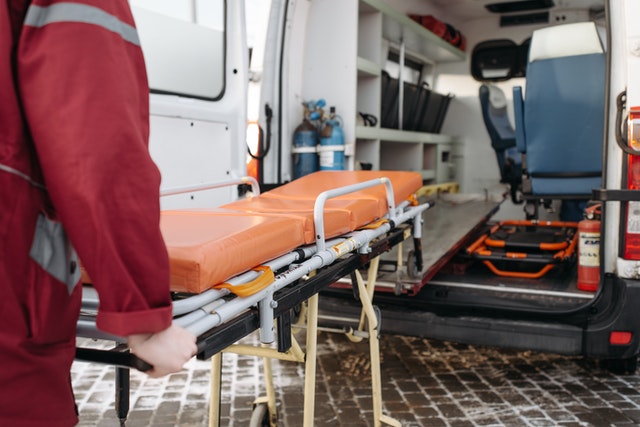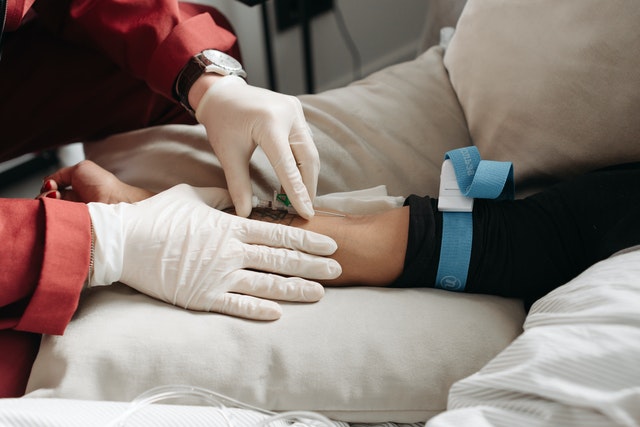To be accepted into a program at a nursing school, you must pass the Hesi A2 test or another entrance exam. One part of the Hesi A2 test is the reading comprehension section. The 47 questions in this exam measure your understanding of short reading passages and sentences, as well as your capacity to recognize key concepts, linguistic meanings, contextual cues, and logical conclusions.
The HESI A2 Reading Comprehension Practice Test sample, which includes 10 practice questions, is provided below. After answering the questions, scroll down to review the explanations and answers. More HESI A2 reading comprehension practice questions are available on our website and mobile app. Visit our free HESI practice test website right away for more questions for the other HESI topics.
HESI A2 Reading Comprehension Practice Test Questions
Paragraph: Lyme disease is caused by ticks. More specifically, Lyme disease is caused by Borrelia bacteria, which are carried by ticks. When ticks infected with this bacteria bite humans, the bacteria can be transmitted into the bloodstream, causing an illness known as Lyme disease.
The symptoms of Lyme disease include fever, headache, fatigue, and joint and muscle pain. One of the most noticeable signs is a rash that looks like a series of red rings radiating out from the bite. This usually appears a week after the tick bite. However, not everyone with Lyme disease gets this rash.
The good news is that Lyme disease can be treated with antibiotics. Most people recover quickly and fully. However, if Lyme disease is not treated properly, patients can suffer from debilitating symptoms weeks, months, and even years after the bite. This condition is known as post-treatment Lyme disease (PTLD) or chronic Lyme disease (CLD).
To protect yourself from Lyme disease, always cover your skin with clothing or insect repellent when hiking or camping. If you get bitten by a tick, remove the tick right away; most cases of Lyme disease require the tick to be attached for 36 to 48 hours. If red rings appear, see a doctor right away. Lyme disease can be harmful, but it is preventable and treatable with early intervention.
1. Why would the author include the detail “most cases of Lyme disease require the tick to be attached for 36 to 48 hours” in paragraph 4?
A. To contradict the argument regarding the severity of Lyme disease
B. To inform the reader regarding the cause of Lyme disease
C. To offer an example of quick recovery from the disease
D. To support the reasoning behind immediate tick removal
Paragraph: Smallpox is one of the most deadly and dangerous diseases affecting the human population across the world. The first recorded epidemic was in 1350 BC during the Egyptian-Hittite war, and it was quite prevalent in the late 1800s through a large part of the 1900s. Approximately five hundred million people were infected with the disease prior to its eradication in the 1970s, with the last case being in Somalia in 1977. Symptoms of infection included excessive bleeding, high fever, delirium, vomiting, and a raised pink rash. Most cases of smallpox ended in death and survivors were often seriously maimed by pockmarks, blindness, or infertility. The pain and suffering remained for a lifetime after the disease was gone.
There is no known cure for smallpox, only preventative vaccinations. Because smallpox was wiped out in the 1970′s, the World Health Organization (W.H.O.) recommended that all countries stop vaccinating for the disease in 1980. This means that today, most young people are not vaccinated against the disease. Because the disease is considered eradicated, the issue of what to do with the remaining government-held vaccines has been an issue of debate. Should the stored vaccines be destroyed since the disease is no longer a concern, or do we keep them in storage for research or in case of an unexpected outbreak? Experts at the Center for Disease Control (C.D.C.) and the World Health Organization have spent an enormous amount of time researching this issue and have given much-educated thought to the matter. Reportedly the W.H.O. wants to destroy all vaccines, however, some scientists feel the destruction could do more harm than good.
The issue of bioterrorism adds another layer of complexity to the issue. In the case of smallpox, just a small amount of the virus released in the air could infect thousands of people in 6-24 hours. If such a disease were used as a weapon, we would obviously want the vaccine available for use. However, the fact that the vaccine still exists allows the use of smallpox for bioterrorism in the first place. If we could be sure all of the vaccines were destroyed, the decision may be a bit easier, But what if the vaccine were only partially destroyed, and the remainder was used by an unfriendly nation?
In this world of global unrest and increasing technology, bioterrorism will come an increasing concern. The smallpox virus could be a serious threat to world health should any nation engage in the act of bioterrorism against an enemy. The question remains: do we run the risk of bioterrorism by continuing to store the medicine for several hundred smallpox vaccinations or do we destroy the vaccine and pray that there is no outbreak of the deadly virus? Because it is unknown at this time if researchers are able to re-create the vaccine, either solution may have permanent consequences.
2. Which of these statements can be inferred from the second paragraph of the accompanying article on smallpox?
A. Smallpox is a very deadly disease.
B. Smallpox is one of the oldest known diseases, dating back to ancient Egypt.
C. The W.H.O. and the C.D.C disagree about how to handle the remaining vaccines.
D. There is no dispute as to how the remaining vaccines should be handled.
Paragraph: In 1841 a young man addressed an anti-slavery meeting in Massachusetts. He talked about what it was like to be separated from one’s family as a child. He talked about being beaten and overworked. He talked about learning how to read and write in secret. He talked about what it was like to be a slave. Perhaps one of the reasons the listeners were so impressed with the speaker was because he had been a slave himself.
Frederick Douglass was born into slavery in 1818 in Maryland. His last name was Bailey, the name of his mother. First, he was separated from his mother, then his grandmother. He eventually was sent to work for a family named Auld. Sophia Auld taught Frederick how to read and write. By the time her husband stopped her, Frederick had learned enough to progress on his own. Later, Frederick worked for a man named Covey, who often beat him. One night Frederick resisted the beating and the two men fought for two hours. This was a dangerous thing for a slave to do, but Covey finally gave up. Frederick has never beaten again.
In 1836, Frederick and other slaves tried to escape. Someone betrayed them and the attempt failed. Shortly after that, Frederick met Anna Murray, a free black woman, and the two fell in love. In 1838, Frederick planned another escape, and this time he successfully reached New York City. He and Anna were married shortly thereafter. Frederick decided to change his last name to symbolize his new freedom. He took the name Douglass from a character in a book a friend of his was reading at the time.
Frederick Douglass’s presence was a tremendous boost to the anti-slavery movement. Anyone who had doubts about the morality or violence of slavery had only to listen to the articulate former slave describe his former life. After President Lincoln issued the Emancipation Proclamation in 1863, Douglass helped recruit black soldiers to fight for the Union in the Civil War. He died in 1895 after a long, full life.
3. What happened first?
A. Douglass addressed an anti-slavery meeting.
B. Douglass escaped from slavery.
C. Douglass resisted the beating of a man named Covey.
D. Douglass took a new name.
Paragraph: Smallpox is one of the most deadly and dangerous diseases affecting the human population across the world. The first recorded epidemic was in 1350 BC during the Egyptian-Hittite war, and it was quite prevalent in the late 1800s through a large part of the 1900s. Approximately five hundred million people were infected with the disease prior to its eradication in the 1970s, with the last case being in Somalia in 1977. Symptoms of infection included excessive bleeding, high fever, delirium, vomiting, and a raised pink rash. Most cases of smallpox ended in death and survivors were often seriously maimed by pockmarks, blindness, or infertility. The pain and suffering remained for a lifetime after the disease was gone.
There is no known cure for smallpox, only preventative vaccinations. Because smallpox was wiped out in the 1970′s, the World Health Organization (W.H.O.) recommended that all countries stop vaccinating for the disease in 1980. This means that today, most young people are not vaccinated against the disease. Because the disease is considered eradicated, the issue of what to do with the remaining government-held vaccines has been an issue of debate. Should the stored vaccines be destroyed since the disease is no longer a concern, or do we keep them in storage for research or in case of an unexpected outbreak? Experts at the Center for Disease Control (C.D.C.) and the World Health Organization have spent an enormous amount of time researching this issue and have given much-educated thought to the matter. Reportedly the W.H.O. wants to destroy all vaccines, however, some scientists feel the destruction could do more harm than good.
The issue of bioterrorism adds another layer of complexity to the issue. In the case of smallpox, just a small amount of the virus released in the air could infect thousands of people in 6-24 hours. If such a disease were used as a weapon, we would obviously want the vaccine available for use. However, the fact that the vaccine still exists allows the use of smallpox for bioterrorism in the first place. If we could be sure all of the vaccines were destroyed, the decision may be a bit easier, But what if the vaccine were only partially destroyed, and the remainder was used by an unfriendly nation?
In this world of global unrest and increasing technology, bioterrorism will come an increasing concern. The smallpox virus could be a serious threat to world health should any nation engage in the act of bioterrorism against an enemy. The question remains: do we run the risk of bioterrorism by continuing to store the medicine for several hundred smallpox vaccinations or do we destroy the vaccine and pray that there is no outbreak of the deadly virus? Because it is unknown at this time if researchers are able to re-create the vaccine, either solution may have permanent consequences.
4. What is the primary purpose of the accompanying article on smallpox?
A. to examine the World Health Organization’s view on smallpox
B. to examine the cause and cure for smallpox
C. to examine the issue of what to do with the remaining smallpox vaccines
D. to examine why smallpox is no longer relevant
Paragraph: The Science of Taste
Have you ever looked at your tongue in a mirror? If so, you have probably noticed that it is bumpy. The bumps on your tongue are called papillae. Each one of the papillae contains hundreds of taste buds. You also have taste buds on the roof of your mouth and on your epiglottis, which is located at the top of your throat. The taste buds send messages to your brain that tell you about its basic flavor—that is, whether you are eating something salty, sweet, bitter, sour, or umami. Umami is hard to describe, but it is most often called a “meaty” or “savory” flavor. Foods with an umami flavor include meat broth, cheese, and soy sauce.
Your mouth and tongue also have receptors that send information about things besides the basic flavors of food. Your mouth has temperature receptor cells that can tell whether a food is piping hot or ice cold. Other receptors give information about the texture of food or how spicy it is.
But just being able to tell whether what you are eating is sour, cold, crunchy, or spicy is not truly tasting the food. For example, orange soda and root beer are both sweet, cold, and bubbly, but they do not taste the same. In order to get the full flavor of your food, you also need to use your sense of smell. The upper part of your nose contains special cells called olfactory receptors. They send messages about what things smell like to your brain. As you chew your food, chemicals quickly travel to the olfactory receptors in your nose. When your brain gets information from both the olfactory receptors and the taste buds, you experience the full flavor of what you are eating.
5. According to the passage, what are taste buds responsible for?
A. Giving information about the texture of food
B. Sending messages to the brain regarding the flavor of food
C. Transmitting information about the smell of food
D. Understanding whether or not something is spicy
Paragraph: A favorite author for over 100 years, Theodor Seuss Geisel was born on March 2, 1902. Today, we celebrate the birthday of the famous “Dr. Seuss” by hosting Read Across America events throughout the month of March. Schoolchildren around the country celebrate the “Doctor’s” birthday by making hats, giving presentations, and holding read-aloud circles featuring some of Dr. Seuss’s most famous books.
But who was Dr. Seuss? Did he go to medical school? Where was his office? You may be surprised to know that Theodor Seuss Geisel was not a medical doctor at all. He took on the nickname Dr. Seuss when he became a noted children’s book author. He earned the nickname because people said his books were “as good as medicine”. All these years later, his nickname has lasted and he is known as Dr. Seuss all across the world.
Think back to when you were a young child. Did you ever want to try “green eggs and ham.”? Did you try to “Hop on Pop”? Do you remember learning about the environment from a creature called The Lorax? Of course, you must recall one of Seuss’ most famous characters; that green Grinch who stole Christmas. These stories were all written by Dr. Seuss and featured his signature rhyming words and letters. They also featured made-up words in order to enhance his rhyme scheme and even though many of his characters were made up, they sure seem real to us today.
And what of his “signature” book, The Cat in the Hat? You must remember that cat and Thing One and Thing Two from your childhood. Did you know that in the early 1950s there was a growing concern in America that children were not becoming avid readers? This was, book publishers thought because children found books dull and uninteresting. An intelligent publisher sent Dr. Seuss a book of words that he thought all children should learn as young readers. Dr. Seuss wrote his famous story The Cat in the Hat, using those words. We can see, over the decades, just how much influence his writing has had on very young children. That is why we celebrate this doctor’s birthday each March.
6. Why is the publisher in the last paragraph referred to as “intelligent?”
A. The publisher knew Dr. Seuss would be able to create a book that sold well.
B. The publisher knew how to read.
C. The publisher knew kids did not like to read.
D. The publisher knew that Dr. Seuss would be able to write a book that would get young children interested in reading.
Paragraph: On a bad day, have you ever been irritable? Have you ever used a harsh tone or even been verbally disrespectful to your parents or teachers? Everyone has a short temper from time to time, but current statistics indicate that between 16% and 20% of a school population suffer from a psychological condition known as Oppositional Defiance Disorder, or ODD.
ODD symptoms include difficulty complying with adult requests, excessive arguments with adults, temper tantrums, difficulty accepting responsibility for actions, low frustration tolerance, and behaviors intended to annoy or upset adults. Parents of children with ODD can often feel as though their whole relationship is based on conflict after conflict.
Unfortunately, ODD can be caused by a number of factors. Some students affected by ODD suffer abuse, neglect, and severe or unpredictable discipline at home. Others have parents with mood disorders or have experienced family violence. Various types of therapy are helpful in treating ODD, and some drugs can treat particular symptoms. However, no single cure exists.
The best advice from professionals is directed toward parents. Therapists encourage parents to avoid situations that usually end in power struggles, to try not to feed into oppositional behavior by reacting emotionally, to praise positive behaviors, and to discourage negative behaviors with timeouts instead of harsh discipline.
7. As used in this passage, the phrase feeds into most nearly means:
A. Abuse
B. Discourage
C. Encourage
D. Ignore
Paragraph: Lyme disease is caused by ticks. More specifically, Lyme disease is caused by Borrelia bacteria, which are carried by ticks. When ticks infected with this bacteria bite humans, the bacteria can be transmitted into the bloodstream, causing an illness known as Lyme disease.
The symptoms of Lyme disease include fever, headache, fatigue, and joint and muscle pain. One of the most noticeable signs is a rash that looks like a series of red rings radiating out from the bite. This usually appears a week after the tick bite. However, not everyone with Lyme disease gets this rash.
The good news is that Lyme disease can be treated with antibiotics. Most people recover quickly and fully. However, if Lyme disease is not treated properly, patients can suffer from debilitating symptoms weeks, months, and even years after the bite. This condition is known as post-treatment Lyme disease (PTLD) or chronic Lyme disease (CLD).
To protect yourself from Lyme disease, always cover your skin with clothing or insect repellent when hiking or camping. If you get bitten by a tick, remove the tick right away; most cases of Lyme disease require the tick to be attached for 36 to 48 hours. If red rings appear, see a doctor right away.
8. What is the main idea of the passage?
A. Lyme disease can be harmful, but it is preventable and treatable with early intervention.
B. Lyme disease can be life-threatening if not treated properly in the early stages.
C. Lyme disease is characterized by its symptoms, including a distinct rash and fever.
D. Lyme disease produces various symptoms, but it is preventable and can be treated in its early stages.
Paragraph: First, be sure to keep the broken ends quiet. Keep the adjacent joints still. Should these joints bend, the muscles will act against the fractured bone and cause motion. Give the victim first aid for shock. Apply a sterile dressing to the fracture if it is compound. Do not try to push back a protruding bone. When you are splinting the fractured area, the end will slip back when the limb is straightened. An ice bag should be used with all fractures, sprains, and dislocations. A simple method of preventing the movement of the fragments is to place the limb on pillows. Splints may also be used to keep the limb from moving. Breaks of the ribs or skull bone need no splints as they are held fast by other bones and tissue.
9. A break that needs no splint is one in the…
A. Arm.
B. Foot.
C. Leg.
D. Ribs.
Paragraph: Alfalfa thrives on land which contains lime, and gives poor results when this ingredient is deficient. The explanation is simple: there is a community of interest between the very low microscopic animal life, known as bacteria, and plant life, generally. In every ounce of soil, there are millions of these living germs which have their allotted work to do, and they thrive best in soils containing lime. If one digs up a root of alfalfa (it need not be an old plant, the youngest plant will show the same peculiarity), and care is taken in exposing the root (perhaps the best method is the washing away of the surrounding earth by water), some small nodules attached to the fine, hair-like roots are easily distinguished with the naked eye. These nodules are the home of a teeming, microscopic, industrious population, who perform their allotted work with the silent, persistent energy so often displayed in nature.
10. Which of the following is an accurate paraphrasing of the underlined phrase?
A. Bacteria and alfalfa plants have a symbiotic relationship.
B. Bacteria in alfalfa is worth studying.
C. Many people are intrigued by the relationship between bacteria and plant life.
D. The gardening community is very invested in the bacteria found in alfalfa.
Read more>> HESI A2 Vocabulary Practice Test
Answers and Explanations
1. D
To support the reasoning behind immediate tick removal
In paragraph 4, the author states that removing a tick as soon as possible is a protective measure against Lyme disease. Therefore, the author includes the detail “most cases of Lyme disease require the tick to be attached for 36 to 48 hours” in order to support the reasoning behind immediate tick removal.
To inform the reader regarding the cause of Lyme disease is incorrect. Although Lyme disease is caused by ticks, the detail does not offer support to the cause of Lyme disease. Therefore, To inform the reader regarding the cause of Lyme disease is incorrect.
The supporting detail “most cases of Lyme disease require the tick to be attached for 36 to 48 hours” does not contradict or mention the severity of Lyme disease. To offer an example of quick recovery from the disease is incorrect. The detail does not have a direct correlation between recovery time, nor does it relate to the rate at which one recovers.
2. C
The last line of the second paragraph states, “Reportedly the W.H.O. wants to destroy all vaccines, however, some scientists at the C.D.C. feel the destruction could do more harm than good.” While smallpox is both an old and deadly disease, these factors are not mentioned in the second paragraph of the article.
3. C
Douglass’ resisting Covey’s beating is described in the third paragraph. The next (fourth) paragraph describes his escape from slavery and then taking a new name to symbolize his new freedom in 1838. The introduction describes his addressing an anti-slavery meeting in 1841. The ensuing paragraphs flashback to a brief biography.
4. C
The issue of what to do with the remaining smallpox vaccines is brought up several times in the article. In the second paragraph, it states, “Because the disease is considered eradicated, the issue of what to do with the remaining government-held vaccines has been an issue of debate.” In the conclusion, the article again mentions, “The question remains: do we run the risk of bioterrorism by continuing to store several hundred smallpox vaccinations or do we destroy the vaccine and pray that there is no outbreak of the deadly virus?” The other options are either not mentioned or are untrue.
5. B
Sending messages to the brain regarding the flavor of food.
In paragraph 1, the passage states that taste buds send messages to the brain regarding the basic flavors of food.
Giving information about the texture of food is incorrect. Receptors, not taste buds, are responsible for giving information regarding texture, as noted in paragraph 2.
Transmitting information about the smell of food is incorrect. Receptors, not taste buds, are responsible for giving information regarding the smell of food, as noted in paragraph 2.
Understanding whether or not something is spicy is incorrect. The spiciness and overall flavor of food are conveyed through receptors, as noted in paragraph 2.
6. D
Choice The publisher knew how to read is incorrect because we can assume that all book publishers must know how to read. Choice The publisher knew kids did not like to read is incorrect because it says in the article that more than one publisher was concerned about whether children liked to read. The last choice is incorrect because there is no mention in the article about how well The Cat in the Hat sold when it was first published.
7. C
Feed into in this sentence means to encourage oppositional behavior.
8. D
If caught in the early stages, Lyme disease is an easily treatable illness. The statement Lyme disease produces various symptoms, but it is preventable and can be treated in its early stages includes main points from the text regarding its symptoms, prevention, and treatment.
While the statement If caught in the early stages, Lyme disease is an easily treatable illness is true and included in the text, it is a supporting detail and not the main idea.
The statement Lyme disease is characterized by its symptoms, including a distinct rash and fever describes a supporting detail regarding the symptoms of the disease.
The statement Lyme disease can be life-threatening if not treated properly in the early stages is incorrect because the text does not describe the disease as life-threatening.
9. D
Of the choices offered, only rib fractures are identified in the article as needing no splints. Skull fractures, not a choice here, are also identified as not needing splinting. Fractures that should be splinted include breaks of an arm, foot, leg
10. A
This question asks you to choose the sentence that has the closest meaning to the underlined phrase. Paraphrase the underlined portion in your own words, and then select the answer choice that best fits. “A community of interest” indicates that bacteria and alfalfa plants work together. This type of relationship can be described as symbiotic.
Read more>> HESI A2 Reading Comprehension Study Guide
Don’t hold off any longer! Take the HESI A2 Reading Comprehension Practice Test right away!

PCCN vs CCRN: Which Certification Should I Take?
In this discussion, we will examine the fundamental distinctions between PCCN vs CCRN certifications, allowing you to make an informed and right decision about which certification is best for your nursing career progression.
June 20, 2023

Is PCCN Worth It? A Comprehensive 2024 Study Guide
In this article, we will provide all the enrollment criteria, how to apply, whether is PCCN worth it for you to obtain, and how to get a high mark.
June 20, 2023

PCCN Requirements - How to Become a Progressive Care Certified Nurse?
To become a progressive care nurse, you must first obtain the PCCN certification. This post will help you understand PCCN certification, PCCN requirements, and efficient approaches to obtaining this certification.
June 20, 2023

![HESI A2 Reading Comprehension Practice Test [2024]](https://passemall.com/wp-content/uploads/2021/07/HESI-A2-Reading-Comprehension-Practice-Test.jpeg)
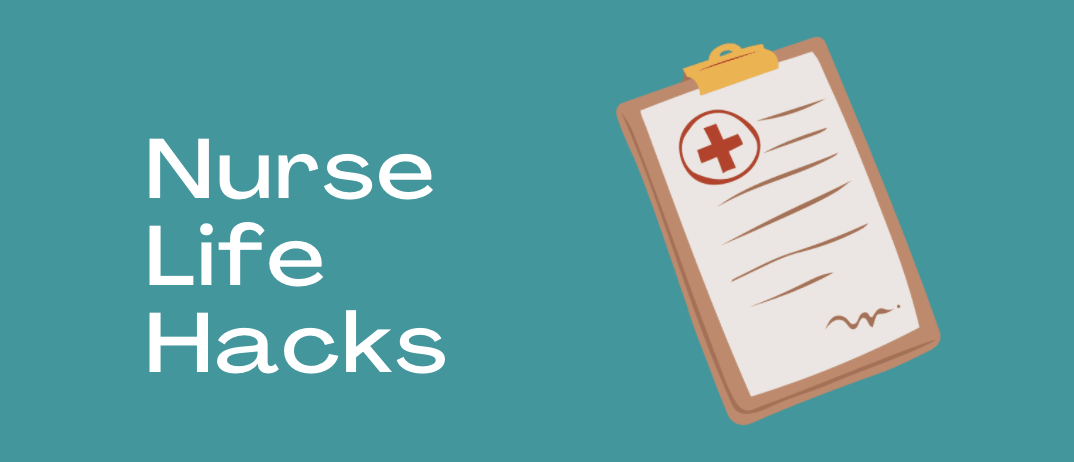
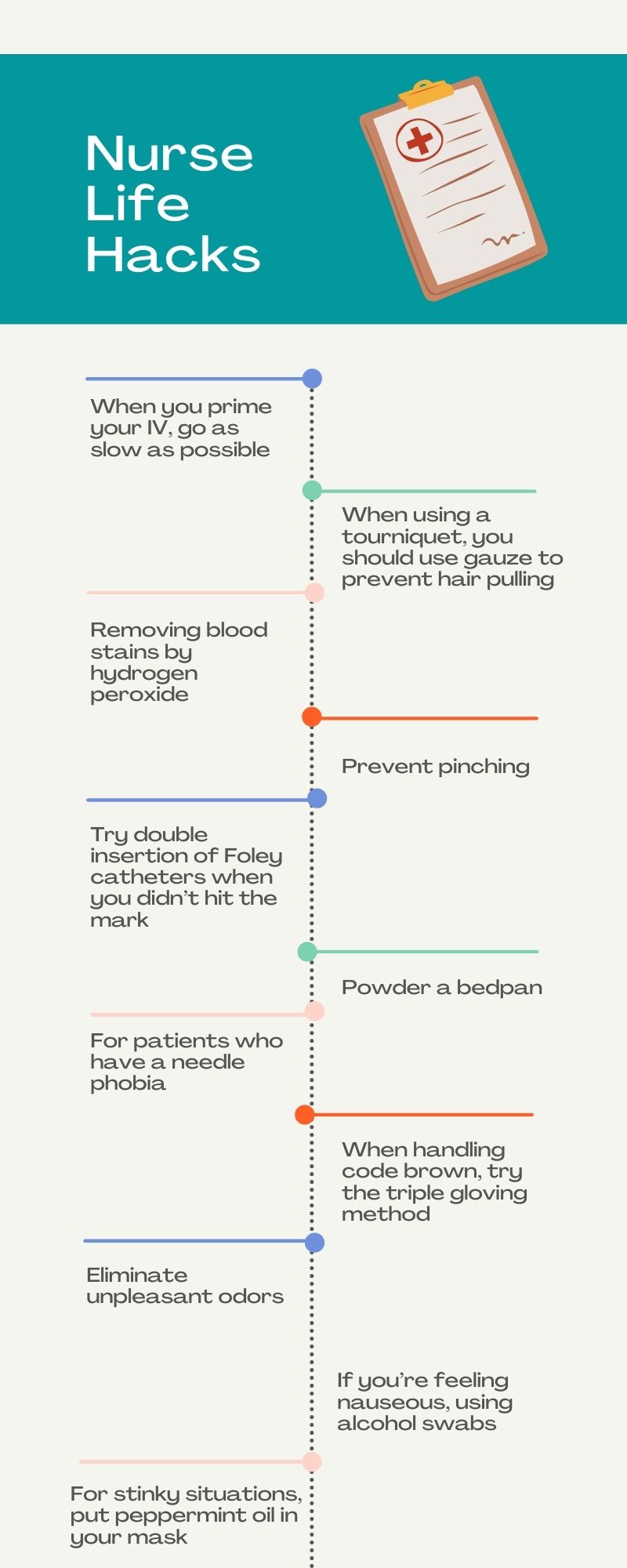



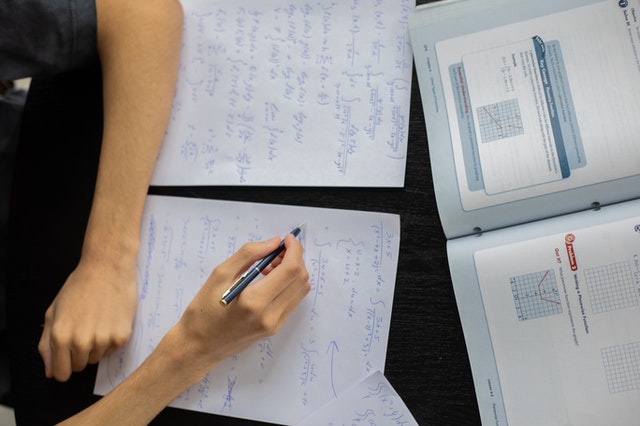

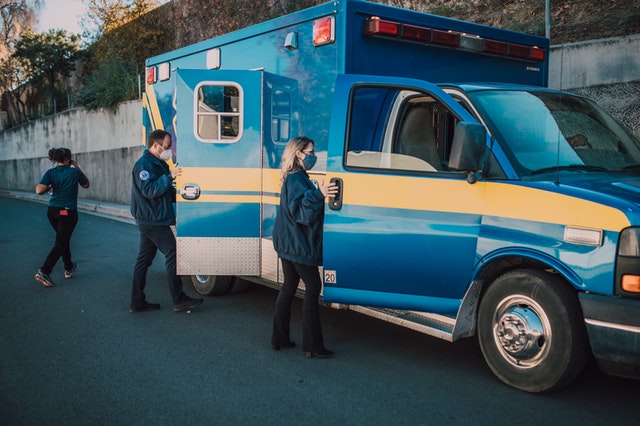

![What Is The Average EMT Salary In Every State [2024 Updated]](https://passemall.com/wp-content/uploads/2021/06/average-emt-salary-by-state.jpeg)
